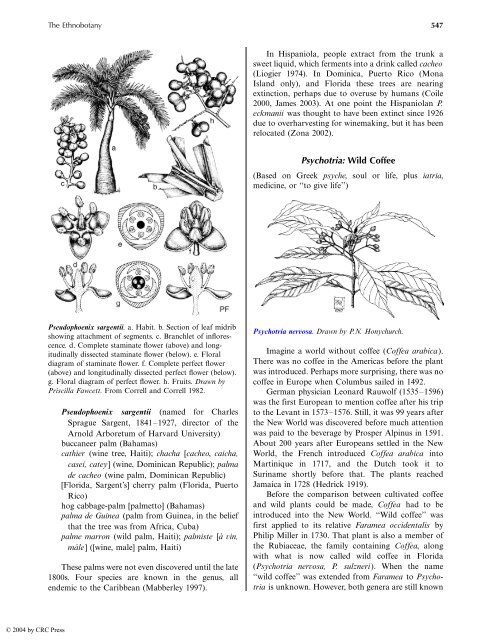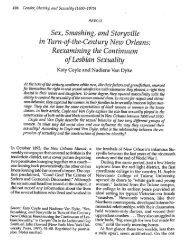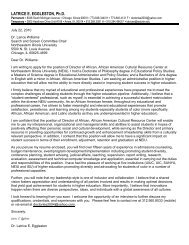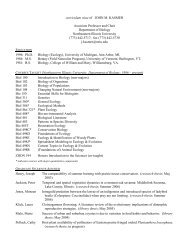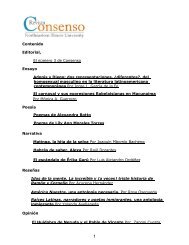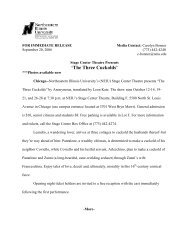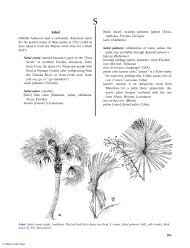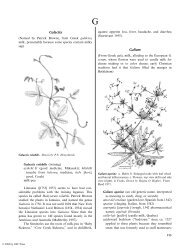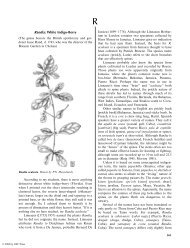Herba Cana - Northeastern Illinois University
Herba Cana - Northeastern Illinois University
Herba Cana - Northeastern Illinois University
Create successful ePaper yourself
Turn your PDF publications into a flip-book with our unique Google optimized e-Paper software.
© 2004 by CRC Press<br />
The Ethnobotany 547<br />
Pseudophoenix sargentii. a. Habit. b. Section of leaf midrib<br />
showing attachment of segments. c. Branchlet of inflorescence.<br />
d. Complete staminate flower (above) and longitudinally<br />
dissected staminate flower (below). e. Floral<br />
diagram of staminate flower. f. Complete perfect flower<br />
(above) and longitudinally dissected perfect flower (below).<br />
g. Floral diagram of perfect flower. h. Fruits. Drawn by<br />
Priscilla Fawcett. From Correll and Correll 1982.<br />
Pseudophoenix sargentii (named for Charles<br />
Sprague Sargent, 1841 /1927, director of the<br />
Arnold Arboretum of Harvard <strong>University</strong>)<br />
buccaneer palm (Bahamas)<br />
cathier (wine tree, Haiti); chacha [cacheo, caicha,<br />
casei, catey] (wine, Dominican Republic); palma<br />
de cacheo (wine palm, Dominican Republic)<br />
[Florida, Sargent’s] cherry palm (Florida, Puerto<br />
Rico)<br />
hog cabbage-palm [palmetto] (Bahamas)<br />
palma de Guinea (palm from Guinea, in the belief<br />
that the tree was from Africa, Cuba)<br />
palme marron (wild palm, Haiti); palmiste [à vin,<br />
mále] ([wine, male] palm, Haiti)<br />
These palms were not even discovered until the late<br />
1800s. Four species are known in the genus, all<br />
endemic to the Caribbean (Mabberley 1997).<br />
In Hispaniola, people extract from the trunk a<br />
sweet liquid, which ferments into a drink called cacheo<br />
(Liogier 1974). In Dominica, Puerto Rico (Mona<br />
Island only), and Florida these trees are nearing<br />
extinction, perhaps due to overuse by humans (Coile<br />
2000, James 2003). At one point the Hispaniolan P.<br />
eckmanii was thought to have been extinct since 1926<br />
due to overharvesting for winemaking, but it has been<br />
relocated (Zona 2002).<br />
Psychotria: Wild Coffee<br />
(Based on Greek psyche, soul or life, plus iatria,<br />
medicine, or ‘‘to give life’’)<br />
Psychotria nervosa. Drawn by P.N. Honychurch.<br />
Imagine a world without coffee (Coffea arabica).<br />
There was no coffee in the Americas before the plant<br />
was introduced. Perhaps more surprising, there was no<br />
coffee in Europe when Columbus sailed in 1492.<br />
German physician Leonard Rauwolf (1535 /1596)<br />
was the first European to mention coffee after his trip<br />
to the Levant in 1573 /1576. Still, it was 99 years after<br />
the New World was discovered before much attention<br />
was paid to the beverage by Prosper Alpinus in 1591.<br />
About 200 years after Europeans settled in the New<br />
World, the French introduced Coffea arabica into<br />
Martinique in 1717, and the Dutch took it to<br />
Suriname shortly before that. The plants reached<br />
Jamaica in 1728 (Hedrick 1919).<br />
Before the comparison between cultivated coffee<br />
and wild plants could be made, Coffea had to be<br />
introduced into the New World. ‘‘Wild coffee’’ was<br />
first applied to its relative Faramea occidentalis by<br />
Philip Miller in 1730. That plant is also a member of<br />
the Rubiaceae, the family containing Coffea, along<br />
with what is now called wild coffee in Florida<br />
(Psychotria nervosa, P. sulzneri). When the name<br />
‘‘wild coffee’’ was extended from Faramea to Psychotria<br />
is unknown. However, both genera are still known


